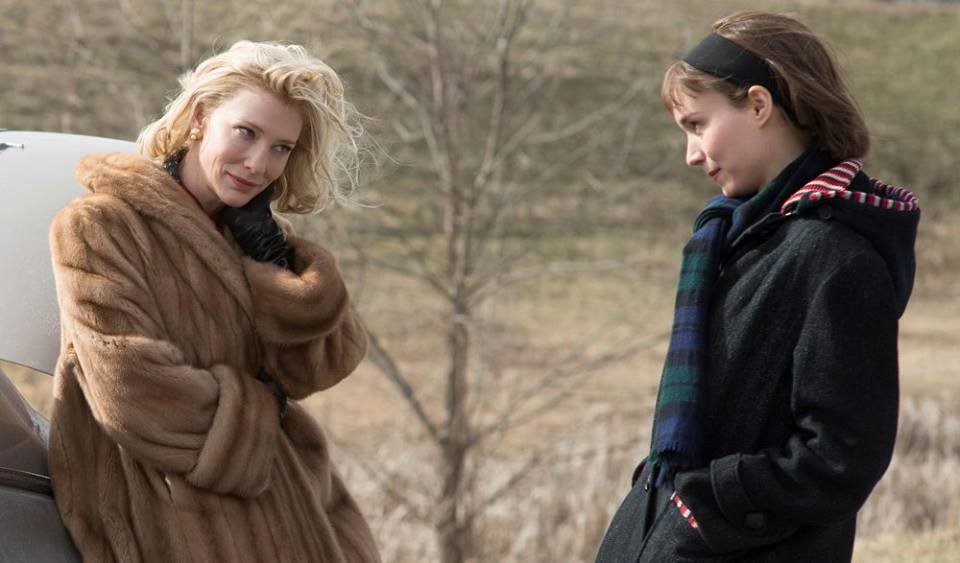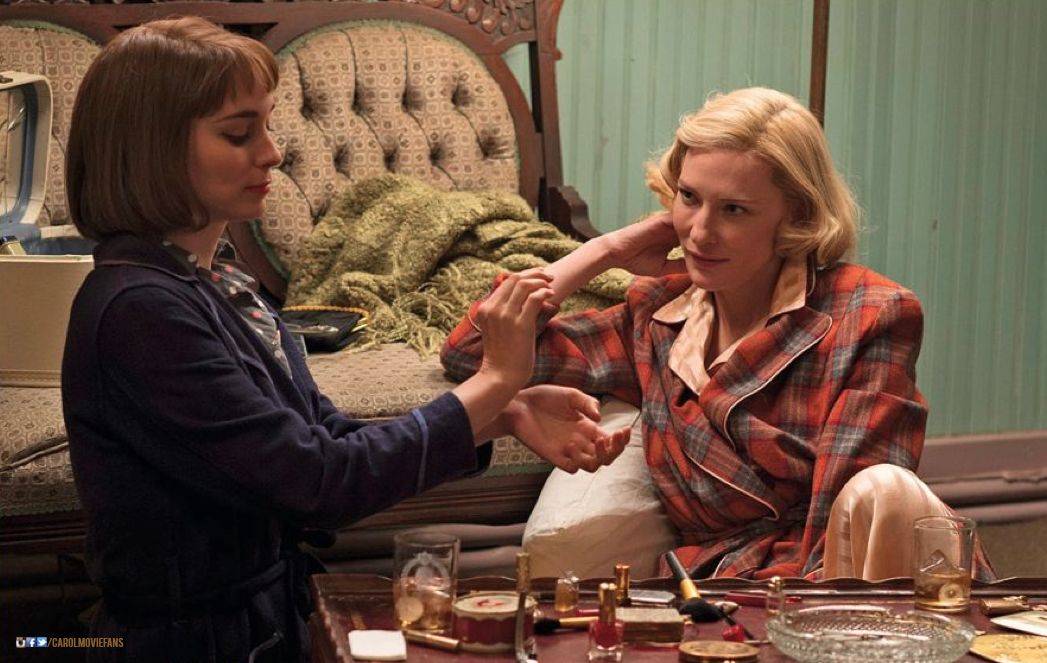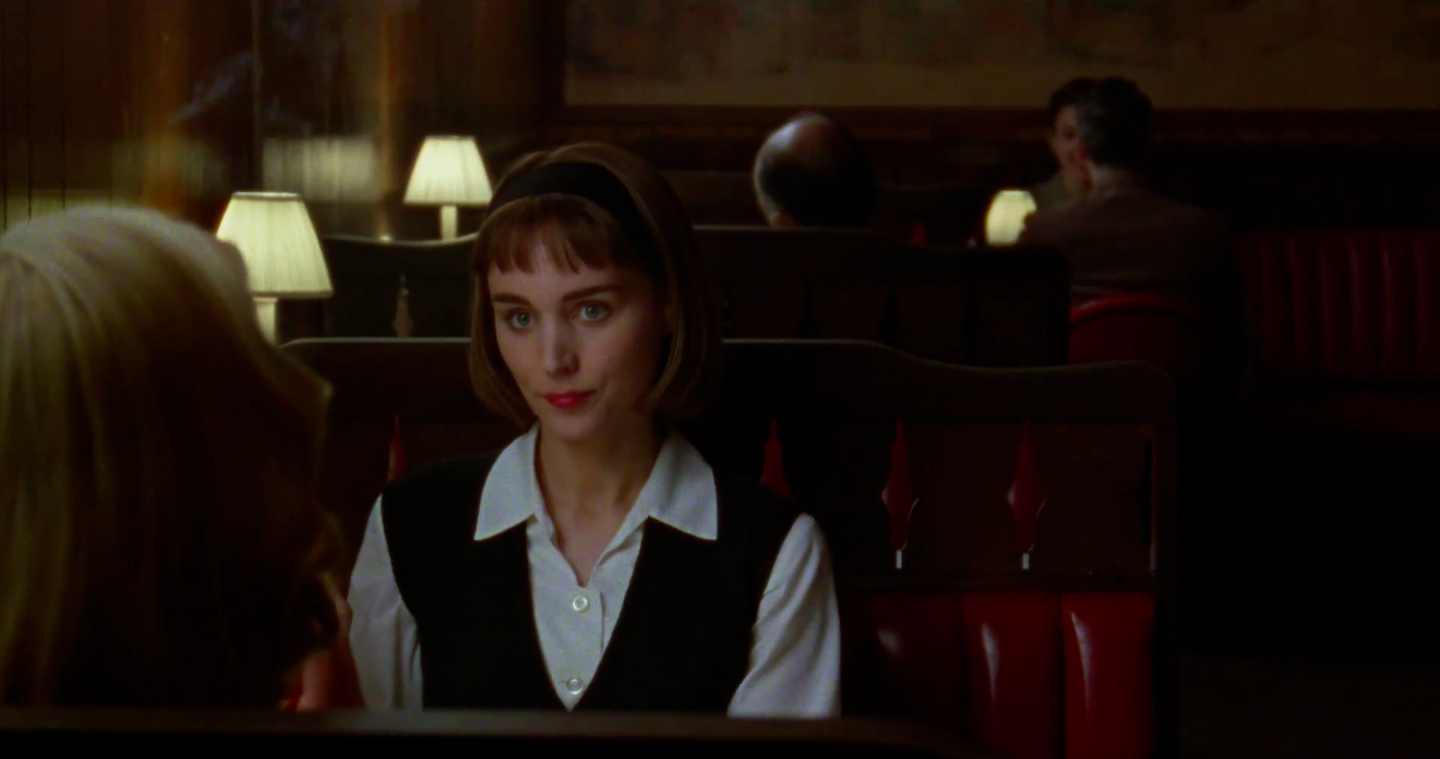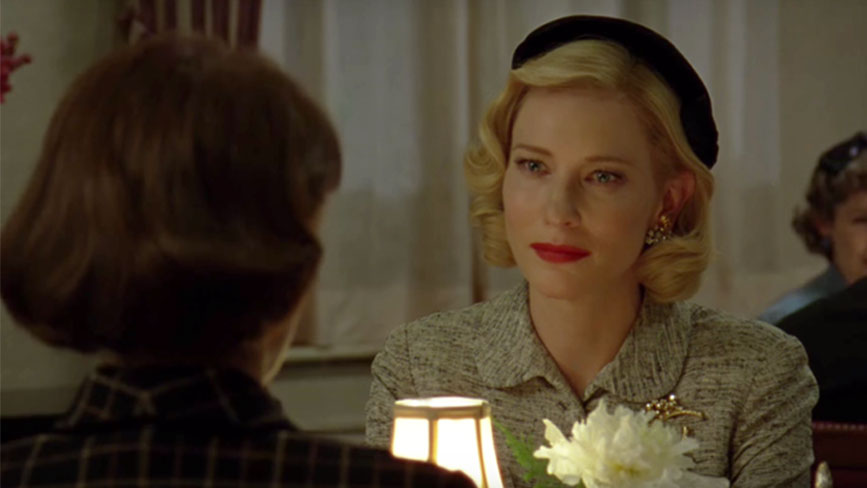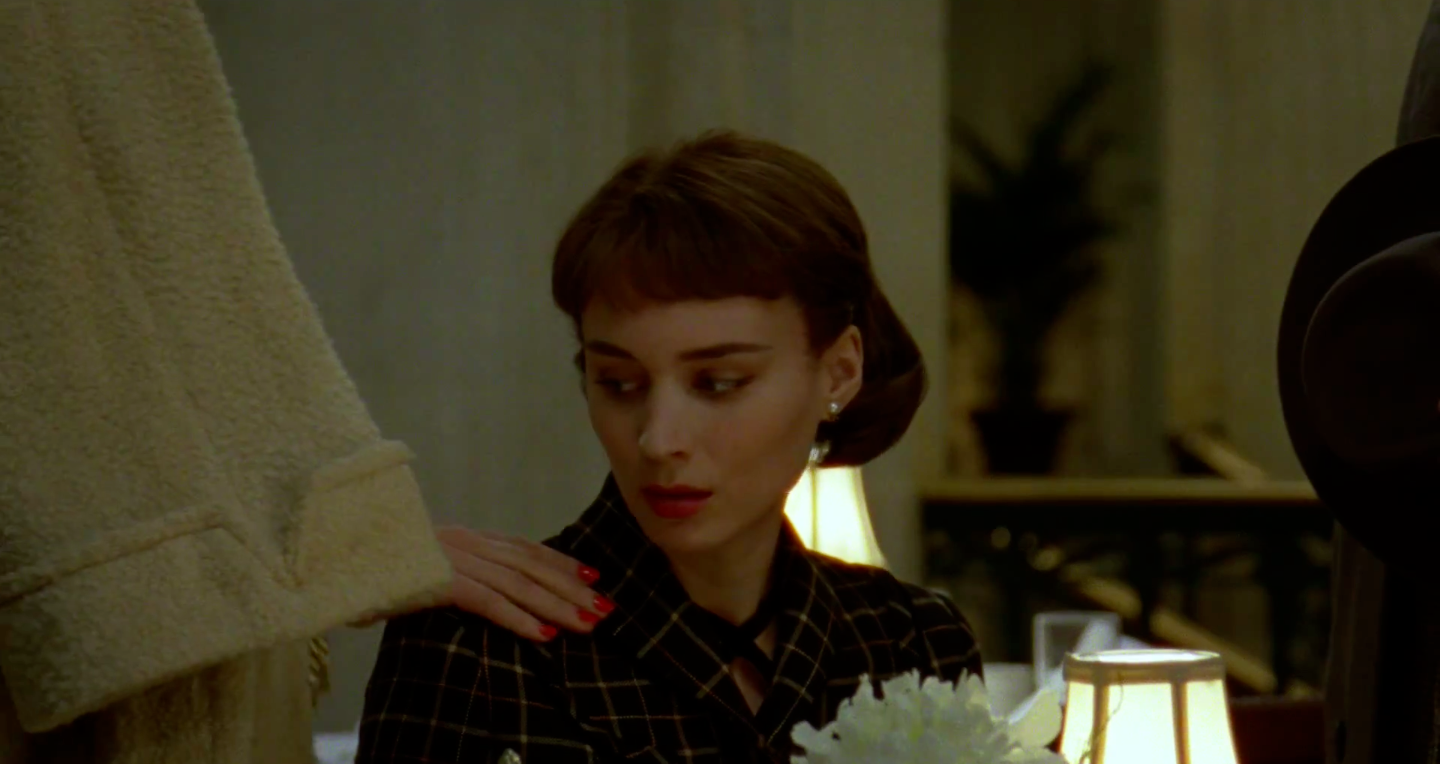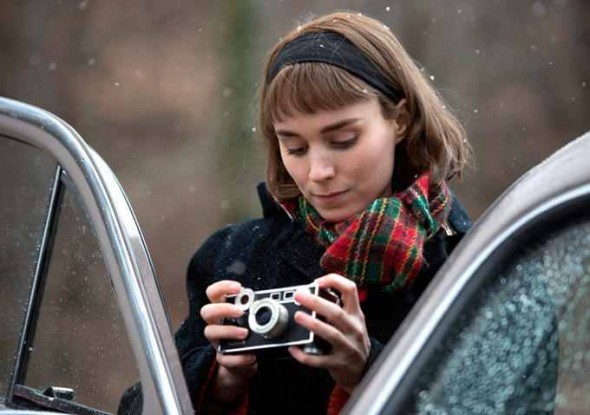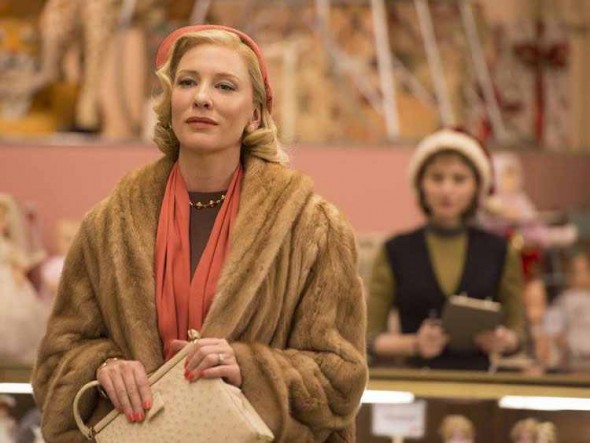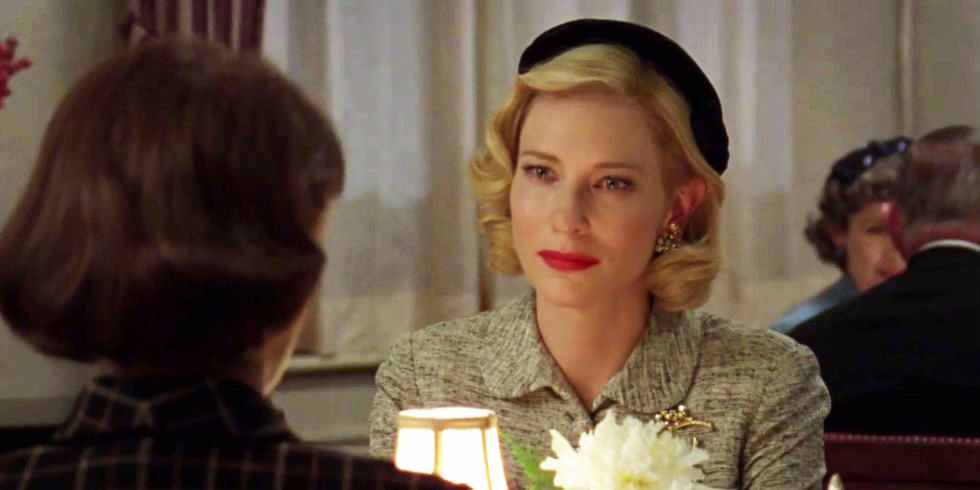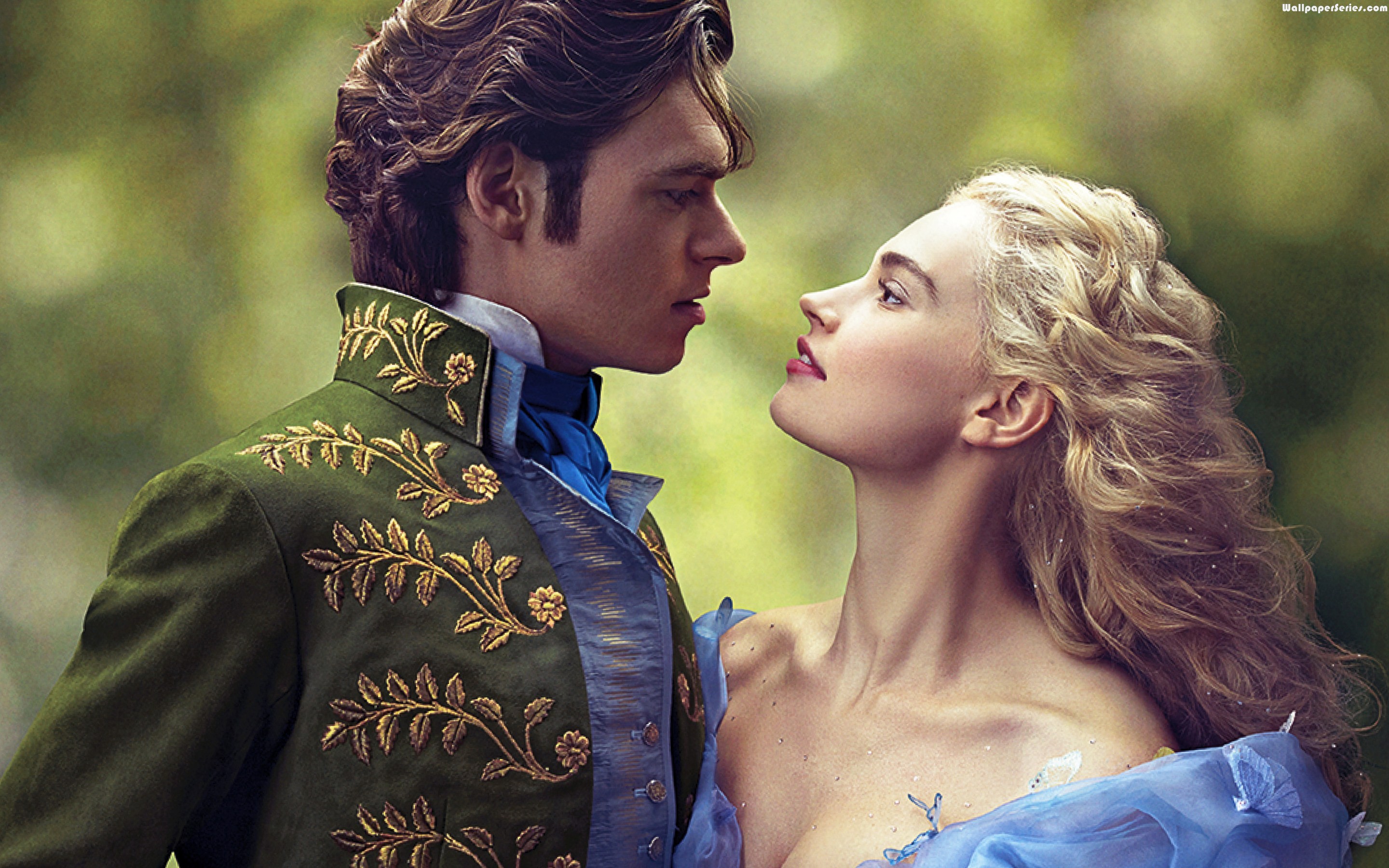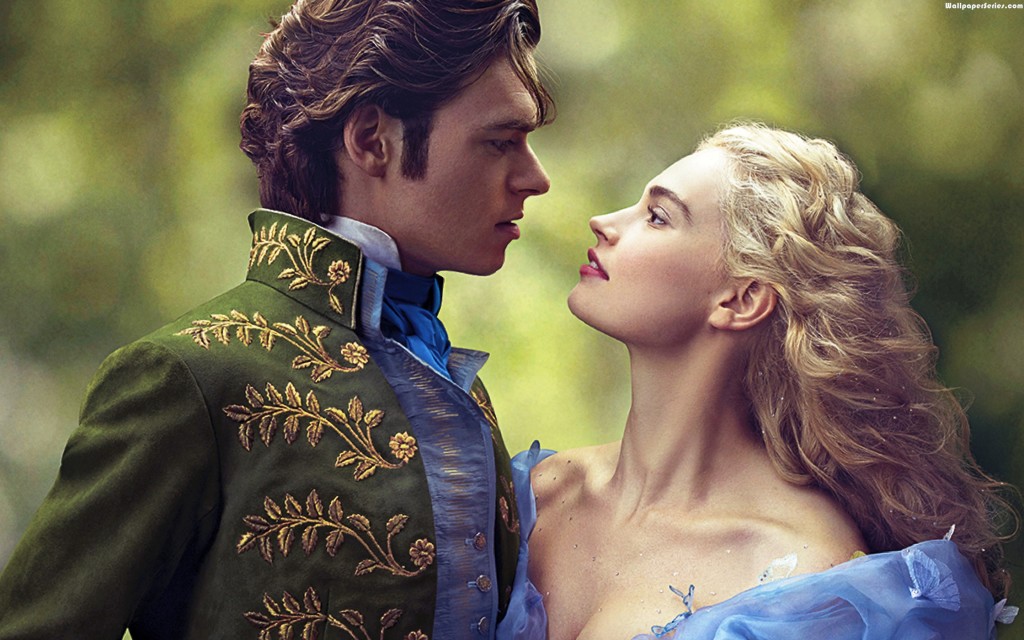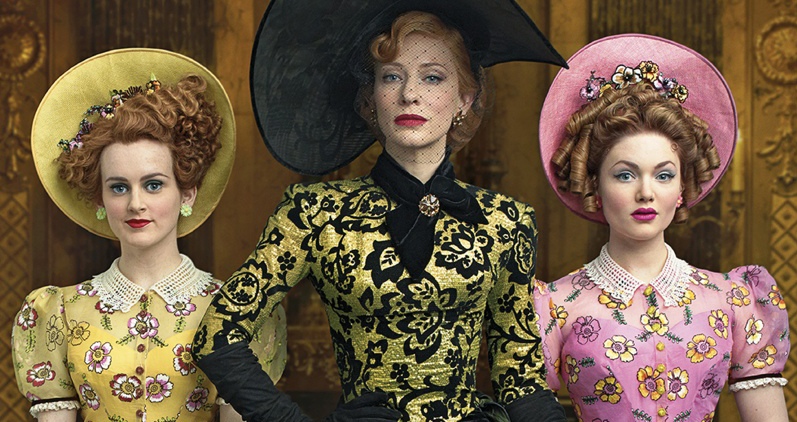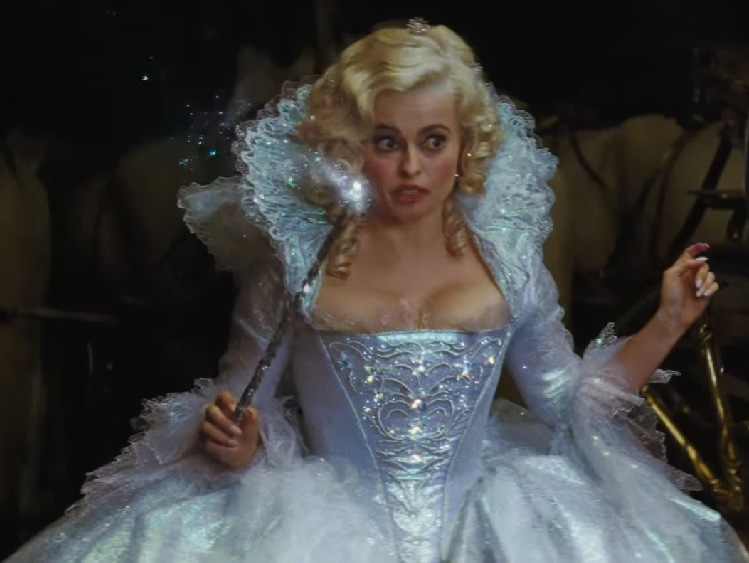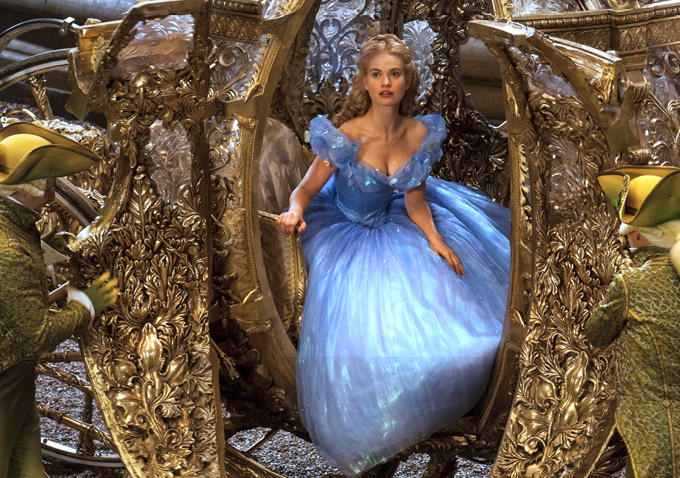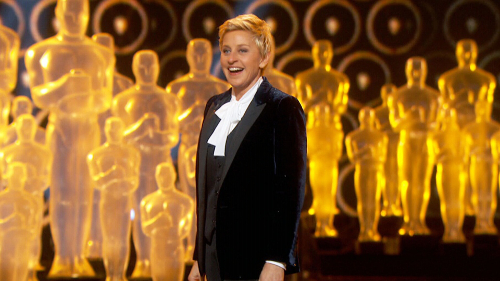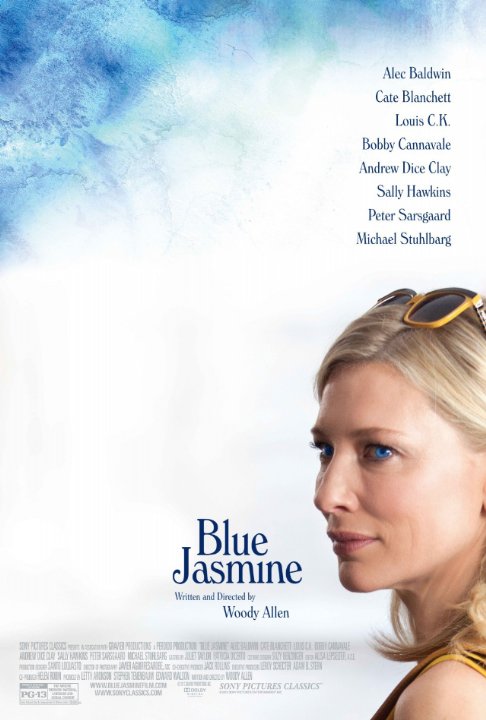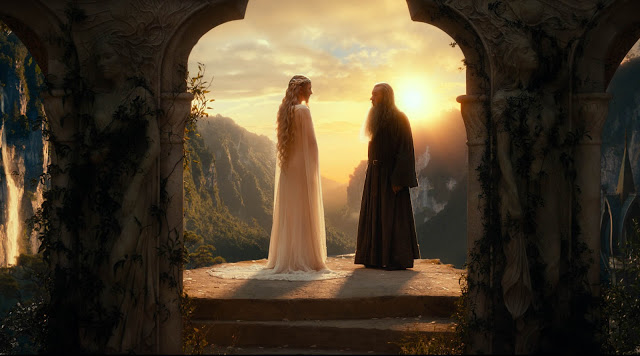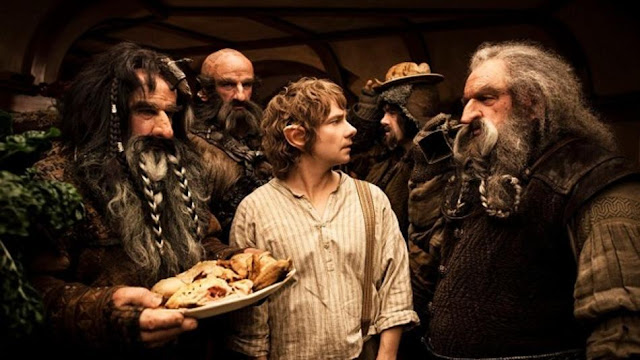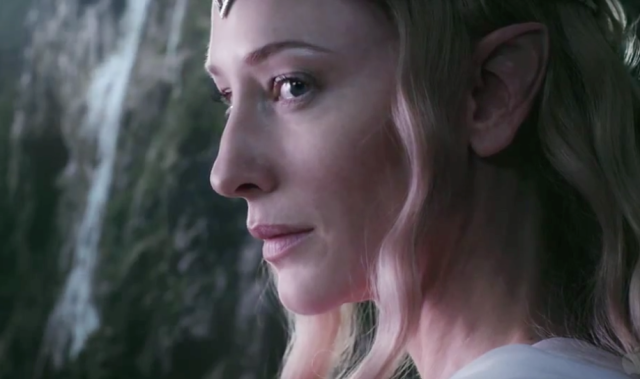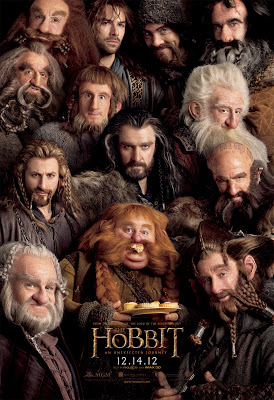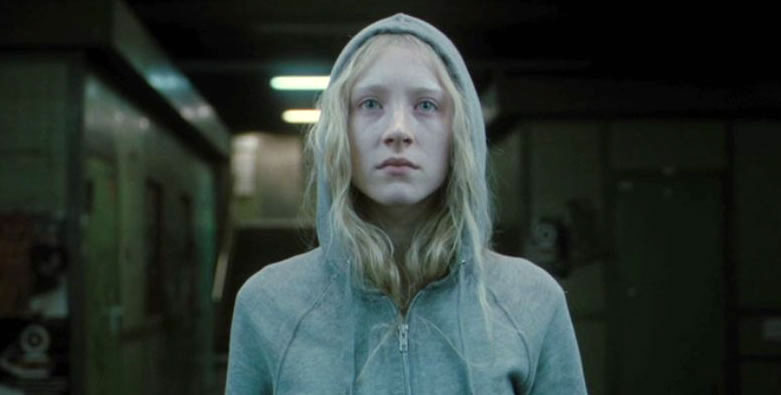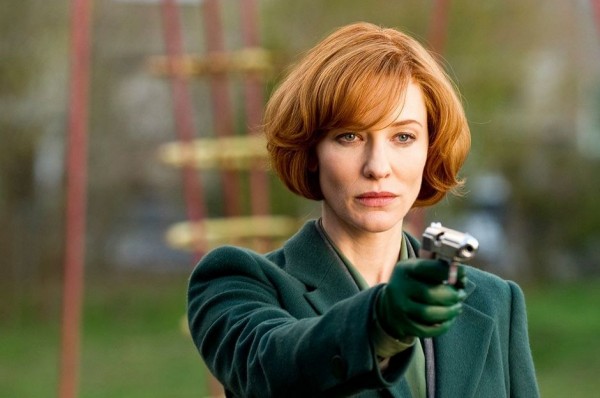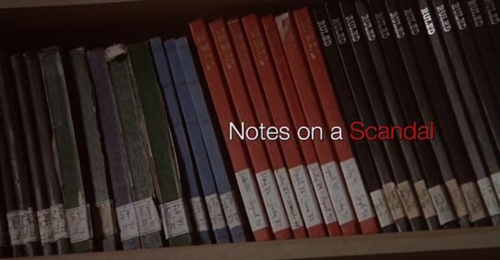This is a guest post by Eva Phillips.
I harbored a tremendous amount of dubiousness for Todd Haynes’ Carol. A lavishly developed adaptation of Patricia Highsmith’s 1952 novel The Price of Salt, the film — chronicling the deeply complicated and ferociously passionate romance between two women, Carol Aird (Cate Blanchett) and Therese Belivett (Rooney Mara) — received such unfettered, rabid praise that I, ever the cranky-queer critic, was immediately suspect. Perhaps it was because I had so much personally riding on the film being a pillar of Sapphic excellence (cranky-queer and malignant narcissist — I’m a jack-of-all-trades). As an almost predictably sad, sexually discombobulated — and, importantly, sexually terrified — kid, I could only reconcile my ample feelings about my sexuality through film. My desires, my confusions, my deciphering whether it was okay to have no clue what I was feeling exactly, had no place in my social life, and, moreover, no place to be securely articulated. Media with glimmers of queer characters and themes provided that arena for articulation of the yearnings, the frustrations, and the utter fear I was often consumed by — films were my realm of liminality. So I became a scavenger of any remotely queer cinema, subjecting my computer to countless viruses covertly streaming Better Than Chocolate, ferreting away rented copies of But I’m a Cheerleader to consult after lacrosse practice, secretly stifling a lot of ire about how indulgent the problematic Loving Annabelle turned out to be.
There was an indisputable comfort and benefit to effectively hiding myself in this really, really, really queer canon. These films allowed me a sort of expression and understanding, and, frequently, blissfully demonstrated oh, this is the sex thing, yes, good, good to know. Yet, despite these films salubrious qualities, the sort of discursive shelter they provided, they often seemed too removed or lacking (of course, you could make the argument that “movies aren’t supposed to fix your emotional/developmental crises” and, you’d be right, I suppose, but terribly rude). They seemed to dwell in a sort of microcosmic queer utopia, or, conversely, despotically tragic queer dystopia (Kill the lesbians! Lock the queer gals up! Happy endings are heteronormative! Bisexuality is a myth!) that never quite addressed the comingled anguish and mirth I experienced in my emotionally tumultuous coming-of-age. I would frequently resort to media where I could engineer some kind of unspoken queer subtext — usually anything with Michelle Rodriguez being seductively cantankerous in the vicinity of Milla Jovovich or Jordana Brewster; or my probably unhealthy fascination with a Rizzoli & Isles ultimate partnership. The wordless, even chimerical quality of these attractions in otherwise “straight” cinema often was more rewarding for me, allowing a safeguard in their silence. There was immeasurable pleasure because my desires and their imagined attractions remained equally untellable.
But in a peculiar way, Carol was like my Queer-Film Baby (a baby that really needed an induced labor, since my town’s theatre was stymied by Star Wars–The Revenant fever) — I pined for it to be some prodigious, cinematic gift to Queer Dames (specifically me), something that would satiate and demonstrate the viscera of queer development and craving. But I cynically feared it would royally muck things up like some of its equally revered siblings (lookin’ at you and your emotional/sexual lechery, Blue Is the Warmest Color). Contrary to many depressingly mono-focused proclamations, I did not want Carol to be (or fail to be) the next Brokeback Mountain (though, had Anna Faris inexplicably made a cameo in the film, I would have been completely on board). I wanted the film to exist in its own right, to not be conflated with the masculine machinations of something else, and to not suffer the Brokeback-fate of hetero-appropriation to show “look how attuned I am to the gay folks struggle.” Like any fretful expecting parent, I did copious research on Carol before its release, and remained skeptical at the inundation of sea of mainstream accolades, fearing voyeuristic tokenism or perhaps somber applause at yet another tragic queer ending. Not even cherished and respected queer testimonials could sway me to believe that Carol was going to deliver, so to speak, and transcend the lineage of queer forerunners as well as triumph the beast of my nagging dubiousness.
It really wasn’t until a little less than a third of the way through the film, after several decadent scenes of Therese and Carol getting lost in delectably nervous dialogue and sumptuous gazes and exquisitely drab shots setting up Therese’s mundane, silently craven life, that the potency of Carol struck me. I found myself hopelessly enraptured by the film’s meticulously flawless and at times excruciatingly realistic depiction of the ineffability that typifies so much of the queer experience. As pivotal as it is understated, the moment comes in a brief utterance that is embedded in a scene riddled with delicate class dynamics and clumsy potential “first date” politics and thus is otherwise overlooked. The scene centers around Carol — played by Blanchett with such fastidiousness, exacting the balance between regality and utter petrification — taking the savagely wide-eyed Therese to lunch as an ostensible thanks for returning her abandoned gloves (a most likely intentional accident). Therese observes, acquiescing to the generational gender expectations, that Carol must have thought a man shipped the lost gloves to her home, apologizing that she was, in fact, the anonymous sender. Carol balks at the alternate possibility, delivering the line that so characterizes what I identify as the film’s superb construction of unspeakable desire: “I doubt very much I would’ve gone to lunch with him.”
There is something so simultaneously infinitesimal and yet infinitely meaningful in this moment. The quiet duality of Carol’s comment, her ecstatic implied reciprocation of Therese’s attraction, establishes a precedent for the outstandingly subdued power of the film. Crucially, though, this moment epitomizes what transforms the film from a complex portrayal of unremitting love into a cinematic portrait of the distinct ineffability of queer desire. Carol’s declaration that she would certainly not have gone to lunch with a male employee is not simply the quelling of “do they/don’t they” trepidations so common to most potential “first date” dynamics — it is an implicit affirmation that Therese’s unfettered and uncertain desire (marvelously and tacitly established in the shot-reverse-shots of the first department store interaction between Therese and Carol) is neither misplaced nor forbidden. Merely by saying, “I doubt very much…” the film pinpoints and satiates that pulsating, unspeakable longing that I (and I know countless others) have felt too many times. Does this individual understand (let alone share) my desire? Is this going to be another suppressed attraction? Is this even allowed (or have I jeopardized myself by exposing inklings of desire)? It is an instance which communicates a euphoria distinct and most poignant to a queer audience (particularly this queer, now four-time audience member) of not just having desire requited, but understanding that who you are, how your desire manifests is welcomed and safe.
Thus the lunch exchange socked me in the gut. The narrative and the characters’ machinations ecstatically eviscerated me, so I fully surrendered to the film (even the somewhat aberrant “oops, we forgot a thriller-centric author wrote this, let’s give Carol a pistol” bit). Every touch or grasp of the shoulder — a reoccurring technique brilliantly juxtaposed in the opening dinner scene, as the difference in emotional arousal is palpable when Carol touches Therese’s shoulder rather than the male friend — translates an empyreal, unutterable world. Every longing stare, every coded phrase (“Why not get the suite…if the rate is attractive?” being one of my nearly-cringe-worthy favorites) and even more coded physical symbols (the portentous abandoned gloves, the removed shoes that must hastily be thrown on when Carol’s husband interrupts her first domestic reverie with Therese) are indicative of a particular vernacular of queer longing borne from the uncertainty or inability to directly profess or announce one’s passions, one’s indelible feelings of love. Equally compelling, the non-romantic (or not in the film’s action, at least) female relationship between Carol and her best friend Abby (plucky-as-ever Sarah Paulson) functions as an extension of this inextricable union. Carol and Abby, while open about their past affair, talk to one another in a uniquely cultivated language that both evokes the complexities of their desire (past and current) and the indefatigable, indescribable bond to one another forged through their specific type of union (they share one of the more beautiful and symbolic forgotten moments: shot from behind, the two intertwine arms and support one another down the stairs).
Many details contribute to the dedicated presentation of this ineffability, this new language of necessity and yearning that distinguishes the queer experience in pleasure, euphoria and aching want. Carter Burwell’s lithe lilting score captures the more finite moments of piqued curiosity or plummeting despair that cannot adequately be articulated. The melodramatic mis-en-scène (maybe Haynes’ greatest nod to Douglas Sirk yet, despite Far From Heaven’s ambitions) augments the powerfully silent subversion that Therese and Carol undertake in their romance. But it’s mostly a testament to Blanchett (whose austerity has been woefully misconstrued by some as haughtiness) and Mara, and even Paulson. They do not allow their characters to succumb to over-the-top tropes, but instead manage to recreate those aspects of queer discovery that I had written off as inimitable in films — the stares that communicate every jumbled, blitzkrieg thought, wish, lust but are not over vamped; the gradual transition into comfort with physicality as each more intrepid, explorative touch conveys the longing that often cannot be spoken; the quiet resilience of women who are not damned by the transcendent nature of their love, but reclaim it, making it physically and emotionally more explosive than any other kind of love.
I have never been so lachrymal in a theatre (except for Toy Story 3 surrounded by small children and for wildly different reasons) than when Therese fumblingly tries to ask “things” of Carol, to which Carol pleads, “Ask me things, please.” I openly wept because I viscerally knew how it ached to have your love feel so inscrutable, desperate to be quenched yet caught in limbo. I wept, at times agonized from the pernicious self-refusal so brutally portrayed, and at times over-joyed, because I had never witnessed the ineffability I went through (and still continue and will always go through, to some extent) in the various stages of my queer acceptance and pursuits of love so accurately acted out before me. No word or line authoritatively delivered, no movement swift or lingering made is insignificant — these women act each second with the full weight of the balefulness, muted cravenness, and language I and a panoply of others adopted, have been all too intimate with. I had never seen so much of myself, my friends, my partners, laid so brilliantly bare on screen.
All of this is certainly not to say the film is unblemished: there’s that tricky, body politics moment during Carol and Therese’s New Years’ consummation in which Carol, transfixed by Therese mutters about her breasts, “Mine never looked like that;” disconcerting class and gender elements; the insufferable good-ole-boy-ness of Kyle Chandler’s character’s name (Hoage? Hart? Harf? Oh, HARGE. Sure. Whatever). But what is so fascinatingly and stupendously gratifying about Carol, particularly when assessed with other pitifully doomed or categorically wishy-washy queer dame narratives, is that the coded, incommunicable language actually pays off. The film captures that quality of subversion and unuttered, unbridled attraction, but then it allows (and it seems pathetic to have to say “allows”) the protagonists to consummate their love — Therese can rush to Carol’s dinner party and, in a spectacular narrative cycle, return the gaze of their first exchange, but this time to silently communicate the agreement to embark on a real relationship. Speaking of gazes, Carol is valorous in not only exclusively and unwaveringly committing itself to the Female Gaze — no one is (irrevocably) punished! Lady-orgasms aren’t devoured by omnipresent dude-licentiousness! — it renders the once believed indomitable Male Gaze utterly irrelevant and desecrated in the wake of female longing.
I share in the disheartenment that the Academy Awards denied Carol the recognition it so rightfully deserved (thankfully, though, Mara and Blanchett got their dues). However, there is, not at all ironically, a quiet valiance in the film’s success that makes it perhaps more profound than, say, Brokeback Mountain. Carol triumphs in electrifying homogeneous audiences, in gripping the audiences at Vanity Fair and Slate but it never compromises its irrefutable queerness to placate or entice heteronormative expectations. The women are empowered by their ineffable queerness and we are allowed a dialectic palisade in an elegant art-house romance; the film’s realities coexist harmoniously. It’s really all this cantankerous queer critic could ever ask for.
Eva Phillips is constantly surprised at how remarkably Southern she in fact is as she adjusts to social and climate life in The Steel City. Additionally, Eva thoroughly enjoys completing her Master’s Degree in English, though really wishes that more of her grades could be based on how well she researches Making a Murderer conspiracy theories whilst pile-driving salt-and-vinegar chips. You can follow her on Instagram at @menzingers2.
